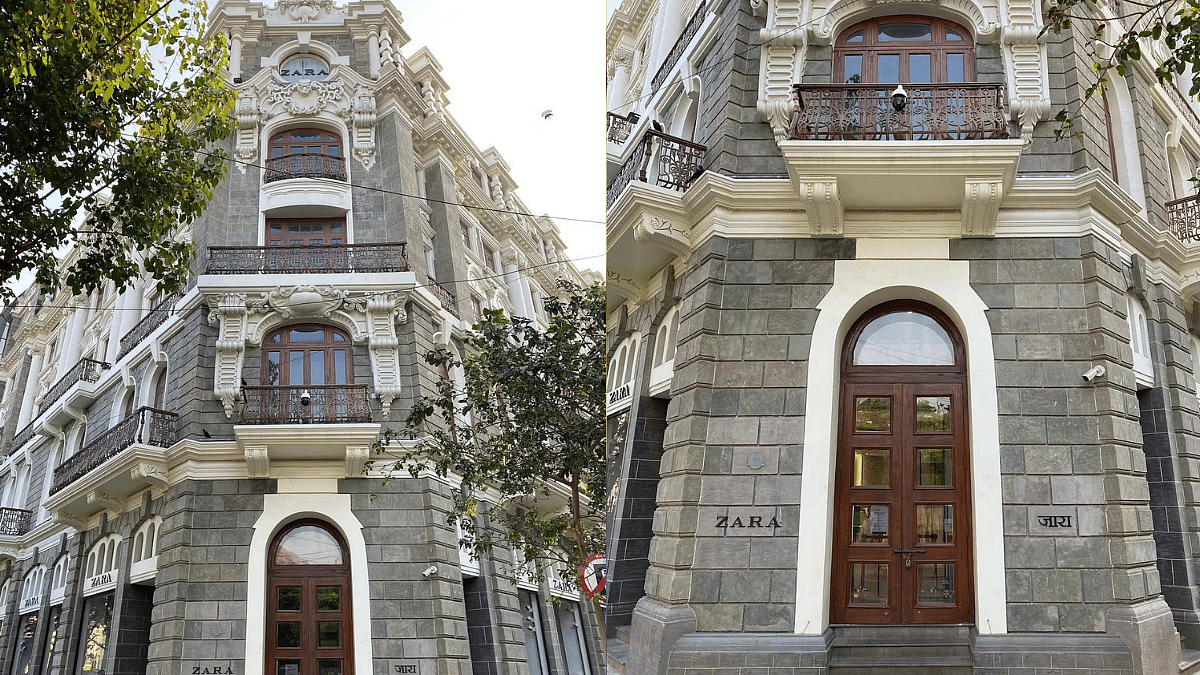Mumbai has witnessed the end of an era with the closure of Spanish fashion giant Zara’s flagship store, located in the historic Ismail Building in South Mumbai. This expansive store, covering 51,300 square feet, marked a significant shift in the city’s retail landscape. However, many are now left wondering about the reasons behind this decision while also reflecting on the rich history of the building, which had become a highlight of Zara’s presence in India.

Zara shuts iconic Mumbai store | Image: FPJ
While the store, which operated in India as a joint venture between Inditex and Tata Group’s Trent Ltd, is reported to be closed, the legacy of the Ismail Building, where the store was located, remains a symbol of architectural splendour and resilience in Mumbai’s rich history.
The history and evolution of the Ismail building
The Ismail Building, an architectural gem in South Mumbai’s Fort area, has stood tall for over a century. Estimated to have been constructed in the early 20th century, the building is named after the Sir Ismail Yusuf Trust, which was originally its primary occupant. The founders of this trust were prominent landlords in Mumbai during the British era and owned several heritage structures throughout the city, as per an Elle Decor report.

Designed in the Edwardian Neo-Classical style, this five-story structure is an iconic example of the architecture from that period. It features dramatic columns, intricate Roman-inspired details, and expansive open spaces, all reflecting the influence of British colonial architecture.
Over the years, the building has served various functions, including housing banks and offices, before ultimately becoming the flagship store for Zara.
Zara’s arrival in South Mumbai!
To transform this iconic location into a brand new store, a dedicated team of restoration experts, including architects Kirtida Unwalla and Mona Sanghvi, along with Zara’s in-house design team, reportedly invested two years in revitalising the structure of the Ismail Building.
The meticulous restoration focused on preserving the original aesthetic while incorporating modern retail infrastructure. Reportedly, the green basalt and limestone columns, which had become dull over time, were carefully cleaned, and the ornate facade was fully preserved both internally and externally.

Zara flagship store in South Mumbai | Instagram (storiesby_sridhar)
Skilled masons and preservation specialists worked to reveal intricate details, uncovering hidden cast-iron pillars and previously boxed-in balcony grilles. Inside, the historic bricks of the building remained visible, honouring its storied past.
In 2017, Zara made history by opening its first-ever standalone street store in India at this location. Moving away from its usual mall-based outlets, the brand boldly invested in South Mumbai’s retail landscape, making the Ismail Building its most impressive location in India.

Zara Mumbai store | Instagram (sakshamjaiswalofficial)
A landmark lost but not forgotten
With Zara’s departure, the future of the Ismail Building remains uncertain. Will it find a new resident who honours its historical significance, or will it face yet another period of neglect? Whatever lies ahead, the building stands as a symbol of Mumbai’s rich architectural heritage.
For now, as Zara bids adieu to the iconic structure, Mumbai has not just lost a premier fashion destination but also a remarkable chapter in its retail history.
